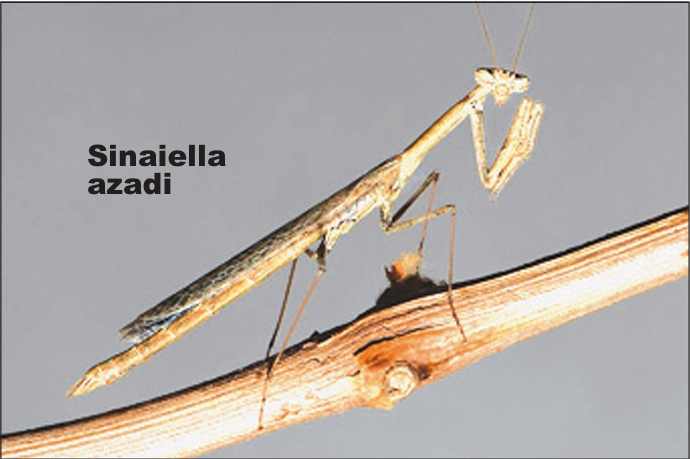In the arid environment of west-central Iran, a new species of praying mantis has been discovered, one that plays dead when frightened.
Fear is common to all species. In humans and many other species, it triggers a fight or flight response. But some species choose unique third options. Squids and octopus may shoot black ink out of their body while they escape. Sea cucumbers can eject part of their guts out of their mouths to scare off predators.

In the arid mountains of western Iran, a newly discovered species has evolved another way to deal with threats — dramatically throwing themselves on the ground.
During recent field surveys, researchers collected four juvenile praying mantises and brought them back to the lab, according to a study published February 27 in the peer-reviewed journal Zootaxa.
The praying mantises were collected as juveniles and raised into adulthood.
The new species belongs to the Sinaiella genus, a group of praying mantises that are “medium-sized,” “slender,” and “rod-shaped,” researchers said. Males of the species are about an inch long, and females are a bit longer, according to the study. Their heads have “dark stripes” and their bodies are “slender” with both forewings and hindwings. “The new species is characterized by the dark, fully infumated (meaning clouded by black color, or smoky) hindwings,” according to the study. The species was named Sinaiella azadi, using the Persian word for freedom and “representing and embodying the struggle for freedom by the people of Iran,” according to the study.
Because researchers held S. azadi in labs in order to rear them to full size, they were able to learn more about their behavior in a closed setting, according to the study.
“The specimens showed side-to-side movements, a considerable ability to catch flying prey, and were mostly hanging from an elevated point,” researchers said. The females also had a unique response to disturbances. When the females felt threatened, they would “throw themselves to the ground, remain immovable and take a specific posture by bringing the antennae closer to the body and extending the legs along the body,” according to the study.
The praying mantises would stay immobile anywhere from a few seconds to more than five minutes, researchers said.
The new species was found in Markazi Province, southwest of Tehran, and in a collection in Armenia. The research team included Mahmood Kolnegari, Christian J. Schwarz, Tigran Ghrejyan and Matthias Borer.






















